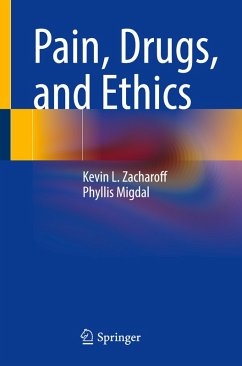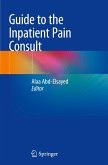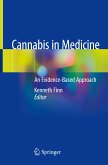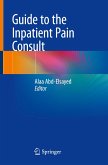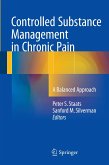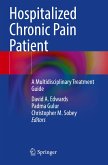Pain remains one of the most common reasons that people seek medical attention in the United States today. One of the ways health care providers responded to pain being designated the "5th vital sign" was with their prescription pads. In order to respond to subjective pain-ratings, opioid analgesics began to be prescribed more liberally than in the past, presumably with the intention of responding to information about pain-related complaints now captured in routine assessments. This was in concert with several other circumstances, including the appearance and promulgation of "pill mills", questionable marketing practices by opioid manufacturers, and increasing rates of abuse, misuse, and addiction related to opioid analgesics. All this taking place in an environment of tremendous educational deficits related to pain, its assessment and treatment, and risks of aberrant drug-related behaviors.
There is now a challenge to balancing the safe, compassionate, and effective treatment of chronic pain against serious negative outcomes associated with the increased abuse and misuse of these medications. With overdose death rates increasing, tensions running high, a multitude of political and regulatory involvement, and "knee-jerk" reactiveness, it seems as if the only thing being forgotten are the needs of chronic pain patients and the core ethical principles intended to help clinicians maintain the highest ethical standards of care.
This book delves into this background and offers the context of professionalism and ethics taught to most healthcare professionals today, and describes how these principles can help to maximize safety, efficacy, and compassionate pain care, regardless of the direction the "opioid pendulum" is swinging. A framework is provided for clinicians to rely on best practices in managing acute, subacute, and chronic pain. The goal is to help clinicians provide patients with pain the most reliable, contextual, and ethical pain care possible.
Pain, Drugs, and Ethics is written for the multiple disciplines involved in managing patients with pain today.
Hinweis: Dieser Artikel kann nur an eine deutsche Lieferadresse ausgeliefert werden.
There is now a challenge to balancing the safe, compassionate, and effective treatment of chronic pain against serious negative outcomes associated with the increased abuse and misuse of these medications. With overdose death rates increasing, tensions running high, a multitude of political and regulatory involvement, and "knee-jerk" reactiveness, it seems as if the only thing being forgotten are the needs of chronic pain patients and the core ethical principles intended to help clinicians maintain the highest ethical standards of care.
This book delves into this background and offers the context of professionalism and ethics taught to most healthcare professionals today, and describes how these principles can help to maximize safety, efficacy, and compassionate pain care, regardless of the direction the "opioid pendulum" is swinging. A framework is provided for clinicians to rely on best practices in managing acute, subacute, and chronic pain. The goal is to help clinicians provide patients with pain the most reliable, contextual, and ethical pain care possible.
Pain, Drugs, and Ethics is written for the multiple disciplines involved in managing patients with pain today.
Hinweis: Dieser Artikel kann nur an eine deutsche Lieferadresse ausgeliefert werden.

